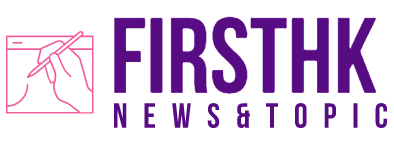Why do we need IoT platform?
An IoT platform is designed to reduce development time for your IoT project by providing ready-made, reusable a technology stack. But there are more reasons to use an IoT platform besides the reduction in development time: It helps you validate your business case early. It helps you go to market quickly.
What is scope of IoT?
IoT has proved to be one of the best tools for the healthcare industry. It helps provide advanced healthcare facilities to patients, doctors, and researchers. These facilities include smart diagnosis, wearable devices for tracking health, patient management, and many more.
How IoT will impact our society?
The positive impact of the IoT on citizens, businesses and governments will be significant, ranging from helping governments reduce healthcare costs and improving quality of life, to reducing carbon footprints, increasing access to education in remote underserved communities, and improving transportation safety.
Do IoT devices need Wi-Fi?
The Internet of Things (IoT) – in most cases – uses the Internet. But, despite the name, the IoT does not actually need the Internet. As it turns out, the IoT without the Internet is possible. In fact, some of our customer systems don't use the Internet at all.
Which protocol is used in IoT?
Zigbee is a mesh network protocol that was designed for building and home automation applications, and it's one of the most popular mesh protocols in IoT environments. A short-range and low-power protocol, Zigbee can be used to extend communication over multiple devices.
What is Internet of Things PPT?
The Internet of Things (IoT) is the network of physical objects or "things" embedded with electronics, software, sensors, and network connectivity, which enables these objects to collect and exchange data.
What is USB in IoT?
Implementing USB in an IoT platform chip means that features can be added to an IoT product either by adding a chip to the system PCB, or by plugging in a USB peripheral. USB host drivers, which are widely available for Linux and other open-source operating systems, support either form of integration.
Is a tablet an IoT device?
So IoT is internet connectivity of smart objects and embedded systems other than mobile phones that can be connected to external hardware. Mobiles, Tablets, Laptops, and PCs are a remote control/access center of IoT.
Who is the father of AI?
After playing a significant role in defining the area devoted to the creation of intelligent machines, John McCarthy, an American computer scientist pioneer and inventor, was called the “Father of Artificial Intelligence.” In his 1955 proposal for the 1956 Dartmouth Conference, the first artificial intelligence ...
Is Siri an AI or VI?
Siri is Apple's personal assistant for iOS, macOS, tvOS and watchOS devices that uses voice recognition and is powered by artificial intelligence (AI).
internet of things moduleRelated Hot Topic
What is an example of IoT technology?
A few examples of IoT goods are smart phones, smart refrigerators, smart watches, smart fire alarms, smart door locks, smart bicycles, medical sensors, fitness trackers, smart security systems, etc.
What sort of USB does the ESP32 employ?
Nearly everything you'll need to start utilizing and programming the WiFi/BT SoC is included in the ESP32 Thing. In actuality, a Micro-B USB Cable is the only additional item needed. The USB interface on the ESP32 Thing can be used to power and program the chip.
What distinguishes ML from AI?
AI is used by "intelligent" computers to mimic human thought and carry out independent activities. The process by which a computer system becoming intelligent is called machine learning. Using a neural network, which is a collection of algorithms based after the human brain, is one method for teaching a computer to imitate human reasoning.
Does NASA employ Sanskrit?
NASA is switching over to Sanskrit. But its recent work with artificial intelligence is an honor, demonstrating its strength as a worthwhile field of writing. Sanskrit's grammar also makes it appropriate for artificial intelligence and machine learning.





.jpg?x-oss-process=image/resize,p_100/format,webp)




.jpeg?x-oss-process=image/resize,p_100/format,webp)





